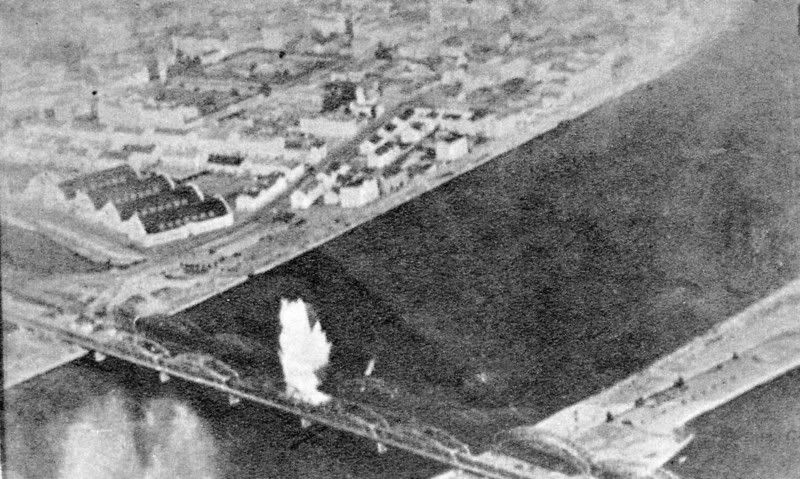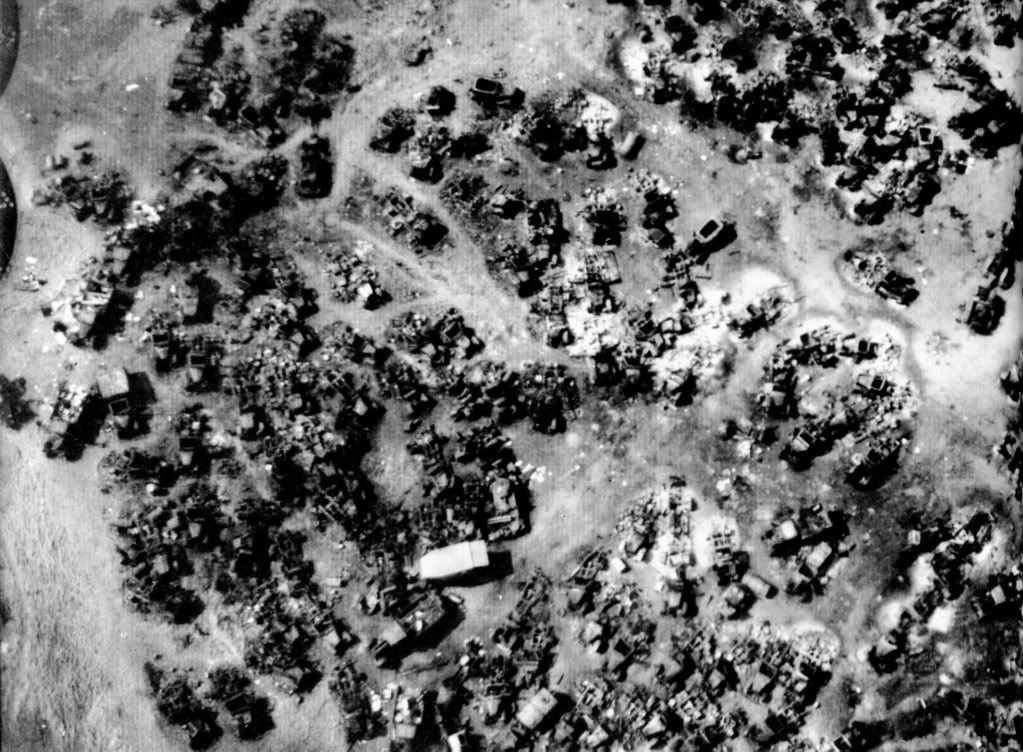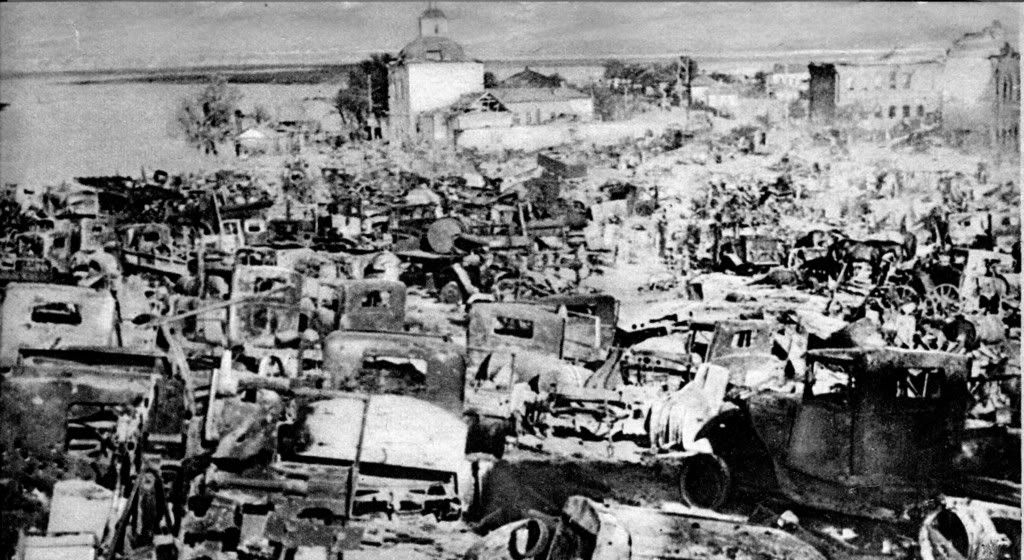…Poor vessel was so badly damaged that she just managed to stay afloat. On the 27th of September 1941 the battleship was punched again and once again knocked by bombing, and as a result half of her main armament was completely destroyed. She was repaired, but magnitude of those damages has prolonged her restoration until November 1942. The repairs did not include all her main armament and it was not until 1944 that she had a full main armament operational.
Yes I know – those ships were motionless. But JU 87 Stuka was capable to prove that even a moving target like a ship at sea is not completely safe. I’m sure you remember those immortal words of late Secretary of the US Navy Josephus Daniels: “I’m so confident that neither Army nor Navy aviators can hit the Iowa when she is under way that I would be perfectly willing to be on board her when they bomb her!”
Well, what a pity that he was not able to see this snapshot:

Aerial attack of a Ju 87 Stuka bombers on HMS Gloucester, May 22, 1941
Two scored direct hits and 7 close hits were enough for the ship’s hull plates to rip open from the force of the explosion, and to sink this unfortunate British cruiser.
And here you have another illustration of Ju 87 accuracy. No further comment is needed.

Precise devastation of an important railway connection carried out by Ju 87 Stuka. Vicinity of Harkov, 1941
As we all know, bridge-bombing is a highly demanding operative assignment. Whenever air superiority was assured Ju 87 was completely capable to accurately and economically fulfill these tasks.

Ju 87 attack on Soviet railroad bridge, Ukraine, July 1941
Soviet railway stations were high-priority targets in the beginning of the Soviet campaign. Here is another snapshots concerning this issue. Do you rememeber that previously presented low-level attack ona a Soviet train? Well, attack was initially cunducted by high-speed diving, and after elimination of a Soviet AAA continued with a combination of in-dive and low-level attacks.

Initial Ju 87 diving attack on a Soviet railway station, Pervomaysk, August 1941
To be continued…














